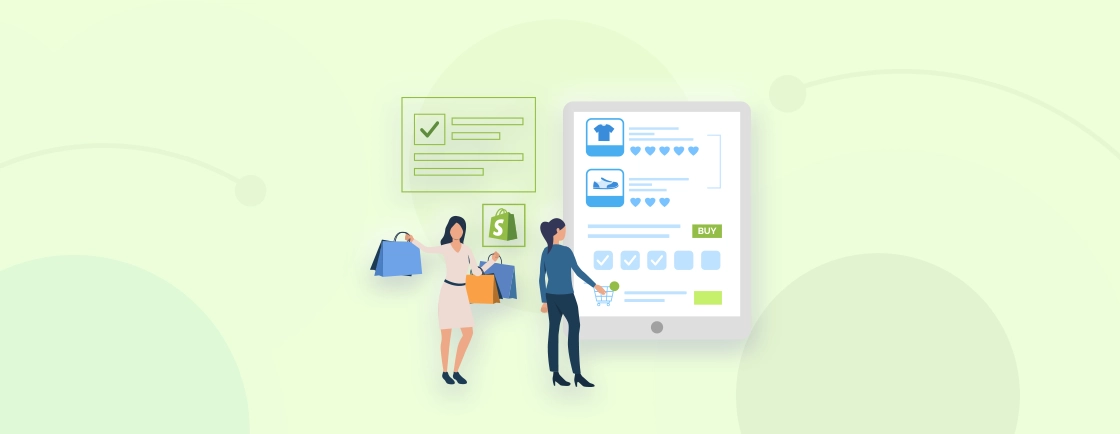Quick Summary
Shopify speed optimisation is essential for better user experience, higher SEO rankings, and increased conversions. By using techniques like lazy loading, compressing media, removing unused apps, updating themes, and optimizing mobile pages, you can significantly improve loading times, boost performance, and enhance overall sales for your Shopify store.
Table of Contents
Introduction
Initially launched in 2006, Shopify is one of the best and most popular eCommerce development platforms. However, like any platform, users often complain that their eCommerce store isn’t functioning as intended, running slowly, or not responding. When that happens, visitors leave your store and move on to competitors. That’s why page speed and performance are crucial for any eCommerce website, regardless of the platform it’s built on.
Page speed measures the time it takes for a website or one of its pages to fully load and display. Google and other search engines consider page speed, performance, and loading times among the most important factors in ranking a website on SERPs.
In this blog, we’ll explore why you should optimize your Shopify page for the best speed, minimal loading times, and optimal performance. We will also share the best tips and tricks to achieve this. Using Shopify State, you can check the current status of your Shopify store.
Why Shopify Speed Optimization Matters
Search engines like Google, Yahoo, and Bing use search algorithms that consider multiple factors to determine which websites and pages rank higher on the SERPs. As mentioned earlier, one of the most important factors in these search algorithms is page speed and performance.
Let’s explore why optimizing a Shopify website for optimal page speed and performance is important:
- A faster page speed improves the user experience, leading to a higher conversion rate.
- If your page loads and renders quickly, people are more likely to stay rather than leave for another website. This boosts user engagement, resulting in more sales and revenue.
- Website speed and performance are among the most important factors that search algorithms consider for positive SEO for the Shopify store.
- Better page speed gets you a higher ranking on the SERPs, which increases organic traffic and potential customers.
- Improved performance enhances the user experience on web pages, resulting in greater customer satisfaction and retention.
- It also reduces the chance of users abandoning their desired products in their carts.
These reasons highlight why it is crucial to optimize your Shopify store for better speed and performance. Next, we’ll explore the best tips and tricks to boost your website effectively.
Tips & Tricks to Boost the Speed of Your Shopify Store
Nowadays, people expect websites and applications to load instantly. If your website takes more than 5-10 seconds to load, potential customers are likely to move on to other sites. This results in a higher bounce rate, reduced organic traffic, and poor user engagement.
To improve user experience and achieve a higher ranking for your eCommerce store in the top positions of the SERPs, optimize your site for better speed and performance.
Here are some tips and tricks to boost page speed and performance effectively:
1. Apply deferred video loading
Video content is essential for any website, whether it’s a regular site or an eCommerce platform. You can easily convey your message in a 2-3 minute video, which won’t be difficult to explain in a 2-3 page write-up.
Sometimes, videos take a while to load on a website, slowing down its speed and performance. You can try deferred video loading to improve this. This technique delays loading video content until it is needed, enhancing page speed. It can be done using JavaScript to load the video only when the user scrolls to its location or by using a lazy loading app that loads the video only when it becomes visible in the user’s browser window. This reduces the initial load time and improves the overall user experience.
If you don’t know how to implement deferred video loading on your eCommerce website, hire our Shopify development company to handle it for you and enhance every aspect of your store, from speed to overall performance.
2. Integrate static images instead of GIFs
GIFs process multiple frames, which can take longer to render on a website. In contrast, images have a single frame and load faster. To improve the speed and performance of your Shopify store, choose images over GIFs as they are smaller in file size.
3. Remove any unused Shopify apps from your store
Shopify offers thousands of applications in its store that can enhance your website’s appearance and functionality. It’s natural to want to use them on your site. However, using too many can cause JavaScript and CSS files to run in the background, potentially slowing down your website’s performance.
So monitor your website regularly and uninstall the Shopify apps that you don’t use often on the website. That would ensure your memory is not wasted on unused files, improving the speed and performance of your Shopify store.
4. Integrate Accelerated Mobile Pages (AMP) on the Shopify store
Millions of internet users access websites on their mobile devices. Therefore, it’s important to ensure your Shopify website loads and renders quickly on mobile devices. With this in mind, experts at Google and Twitter developed an open-source project called AMP, or Accelerated Mobile Pages.
Accelerated Mobile Pages are web pages designed to load quickly on mobile devices. They use AMP HTML and are cached on Google’s servers to improve website speed and performance. With AMP, you can ensure your Shopify store loads quickly and smoothly on all types of devices, enhancing user experience and increasing organic traffic.
Several apps, such as FireAMP and AMP by Shop Sheriff, are available on the Shopify store to help you create and integrate accelerated mobile pages into your website. These can significantly boost your website’s performance.
5. Compress the media files
Images and videos enhance the appearance and user experience of a website. However, if they are too large, the website will take longer to load and render. One of the most effective techniques Shopify developers use to improve the speed and performance of an eCommerce store is compressing the image and video files.
Several applications are available on the internet and the Shopify store, such as compressor.io, TinyPNG, TinyJPG, etc. These apps use lossless compression, which helps compress the size of the images on your Shopify website without sacrificing the quality.
You can also find applications and websites on the internet that can help reduce the size of the videos through editing. Use these tools to compress the videos and improve the speed and performance of your Shopify eCommerce store.
6. Implement lazy load images
Lazy loading is a web development technique that can help improve the load times and performance of a website by delaying the loading of images and other resources until the user actually needs to see them. Instead of opening and rendering all images on a web page instantly, this technique only loads the images currently visible or will soon be visible to the user. That helps reduce the amount of data that needs to be loaded upfront, improving the initial load time of the web page quite significantly.
The main advantage of using lazy loading is that it allows for a faster loading time even with a lot of images. That improves the overall UX, particularly on mobile devices and slower internet connections.
Here is an example of lazy loading:
<img class=”lazyload” data-src=”https://yourwebsite.com/image.jpg” />
7. Choose suitable fonts for your store
Another important tip to improve the speed and performance of a Shopify website is to use appropriate fonts, such as licensed Monotype fonts, system fonts, and Google Fonts, which are free to use from the Shopify font library. These fonts are pre-installed on almost all computers and mobile devices, so they’ll load faster on the browsers across PCs and mobile devices.
8. Minimize broken links & redirects
Every time a user clicks a link that redirects to another page, the browser must make an additional request to the server, which can slow down the page’s load time. Additionally, clicking a broken link leads to a 404 error page, frustrating users and further slowing load times. To ensure faster performance and a better user experience, minimize redirects and broken links. Several applications available on the Shopify store can help fix broken links and reduce redirects.
9. Update the Shopify themes and applications
The Shopify team continuously introduces updates to the core platform and various applications in the Shopify store to enhance their appearance and functionality. Therefore, it is important to keep them updated to the latest versions to improve the speed and performance of your eCommerce website.
These are just a few of the significant tactics you can implement to boost the page speed and load times of your Shopify-based eCommerce websites.
Conclusion
If you run a product-based business, a Shopify-based eCommerce website can be very helpful. However, even after designing and creating a great store, your organic traffic might remain low due to a poor user experience. One common reason for this is slow website speed and performance.
That’s why we have discussed the best tips to boost the speed of your Shopify website, load times, and performance of your Shopify eCommerce website. Implementing these tactics will help you increase your eCommerce store sales. That would help bring more new organic traffic and retain the past recurring customers as well. Since page speed is a highly significant factor in search algorithms, these tactics will also help your eCommerce store reach the top positions of the SERPs.
Want to boost your Shopify store’s performance? Then hire Shopify developers with us today!
Transform Your Store Performance
Slow loading times hurt traffic and conversions—our speed optimization services fix that fast.





